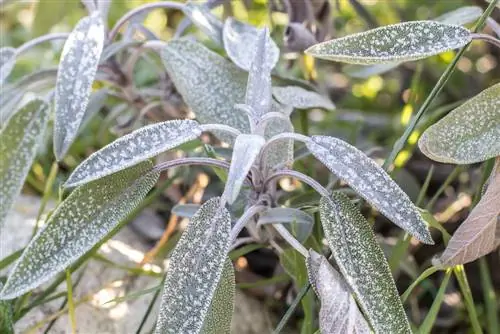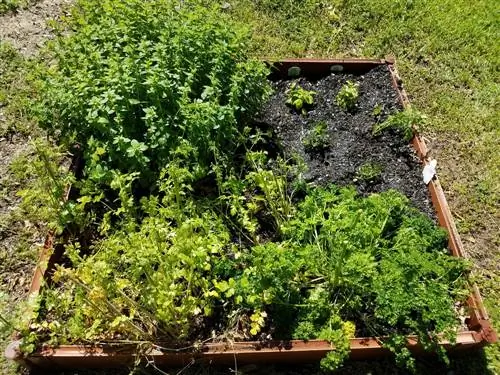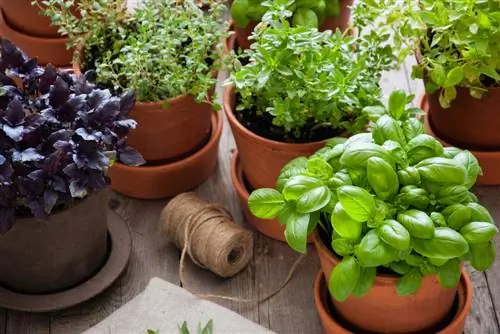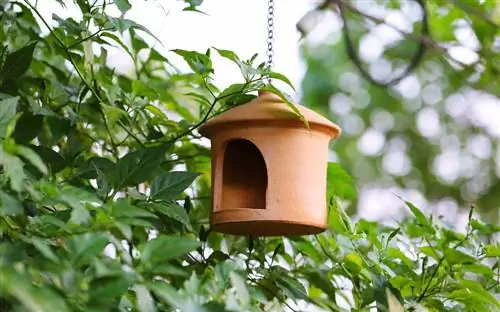- Author admin [email protected].
- Public 2023-12-16 16:46.
- Last modified 2025-01-23 11:21.
A herb garden can be designed in many different ways: as a kitchen garden, as an aroma or scent garden or simply “just” a few particularly aesthetic specimens as a decorative and useful element in the perennial border. No matter how different the herbs and their needs are, these tips will make growing and using them easier.
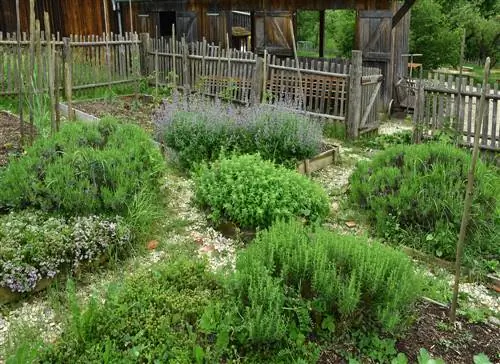
How do you design and maintain a herb garden?
A herb garden can be designed as a kitchen garden, aroma or fragrance garden. Important tips: Choose edible and decorative flowers, change the location when sowing parsley, protect basil from moisture, plant sage in the company of roses, use thyme as a versatile plant and choose cold-tolerant rosemary varieties.
Herbs with edible and decorative flowers
Especially among the annual and biennial herbs, there are many species with flowers that are as decorative as they are tasty. For example, the pretty flowers of the nasturtium are edible, and the still closed flower buds can also be used as a substitute for capers. Other edible flowers include: dill, chervil, borage, clary sage, daisies, marigolds, chamomile or spice tagetes.
Problematic parsley
Is your new parsley seed not really developing even though it grew so well in the same place last year? This is probably why it thrives so poorly, parsley is incompatible with itself. So you have to change the location for each new sowing, otherwise the plants will develop poorly due to growth inhibition. By the way: The kitchen classic inherently has a very long germination time, sometimes lasting several weeks. When growing outdoors, you can sow a few radishes as markers in between so that the rows of seeds remain visible.
Basil belongs under the rain cover
In regions with high rainfall, basil should be cultivated under Plexiglas or glass roofs or as a permanent culture in a cold frame. The sensitive plant receives sufficient light but remains largely dry. Excessive moisture can cause basil wilt.
Sage is the perfect rose companion
The culinary sage with its silver-gray foliage is an effective companion for roses in the border, as long as the plants are not planted too close together and the sage gets specially emaciated soil in the planting hole. The numerous variegated varieties also go wonderfully with the “Queen of Flowers”: white variegated leaves complement white roses perfectly, yellow patterned ones underline yellow roses tone on tone.
Thyme grows almost everywhere
Thymes are characterized by a fascinating will to survive even under the harshest conditions. The plants are so undemanding that they take root almost everywhere: in niches, cracks, joints, between paving stones, treads and in stair joints. Creeping thyme species such as cascade thyme or sand thyme are very suitable for planting under standard trees, while green lemon thyme also thrives in shady places.
Cold-tolerant rosemary varieties
Rosemary is generally not considered winter-hardy and will do well at temperatures of minus five degrees Celsius. Not so with the variety 'Veitshöchheim' from the Bavarian State Research Institute, it can withstand temperatures down to minus 20 °C. The varieties 'Arp' and 'Hill Hardy' are considered equally hardy.
Tip
Its essential oils and other ingredients make wormwood an effective plant protection product that can be used wonderfully against aphids and mites, but also against various fungal diseases.


